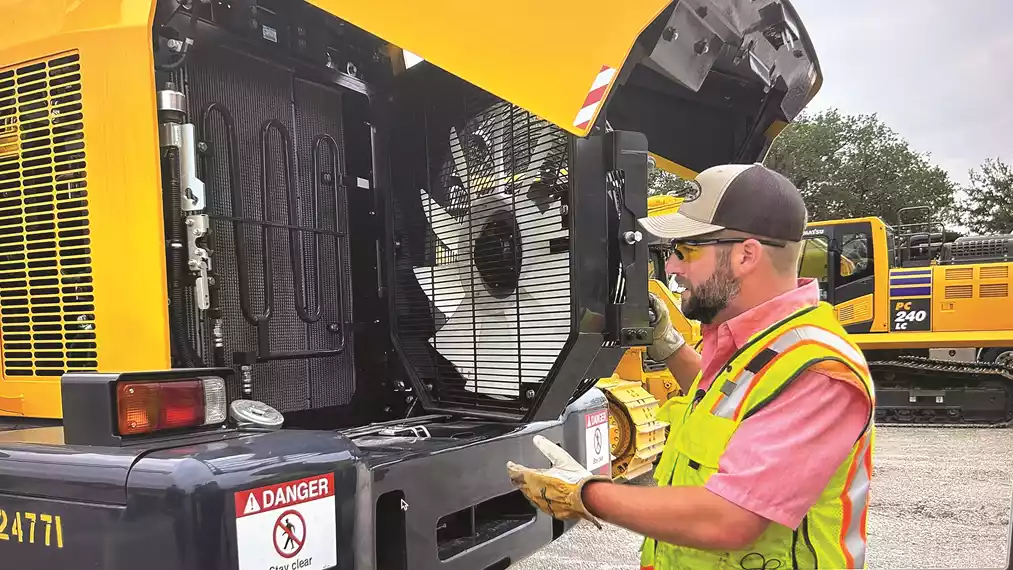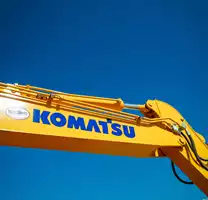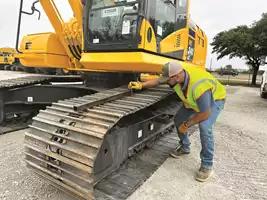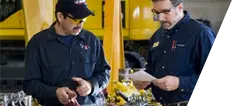When your wheel loader runs in high heat or dusty conditions, your cooling system is doing more work than most people realize. A clean, well-maintained cooling package isn’t just about temperature. It’s about uptime, performance, and protecting some of the most expensive components on your machine.
We caught up with Chase Barber, one of our Product Support Sales Reps (PSSR) in Fort Worth, to break down why checking your cooling system should be part of every operator’s daily walk-around and how performing a fan reversal can help extend your machine’s life.
1. Start with a Daily Cooling Check
Every morning before startup, operators should take a quick look at the cooling package. On dusty job sites, debris builds up fast, and when moisture mixes in, that dust can harden like concrete. Once it starts to pack in, air can’t flow freely, and your engine and hydraulic systems will run hotter than they should.
Keeping the cooling system clean means fewer temperature alarms, longer component life, and better overall efficiency.
Pro Tip from Chase: “If you’re in a dusty environment, it’s not if the cooling package will clog, it’s when. Catch it early.”
2. Don’t Forget the Cabin Fresh Air Filter
Comfort and performance go hand in hand. A clogged cabin air filter doesn’t just affect airflow inside the cab. It can also impact how efficiently your HVAC system works.
Check your fresh air filter every 100 hours and blow it out with low-pressure air. Replace it about every 2,000 hours to keep things running clean.
3. Use the Built-In Fan Reversal Feature
Komatsu wheel loaders like the WA320 and WA500 make it easy to clear debris with an automatic fan reversal system. You can set the duration and timing right from the in-cab monitor.
Here’s how it works:
- Go to the monitor and select Manual Fan Reverse Mode.
- Confirm when prompted. You’ll see the fan reversal icon appear and hear the fan change direction.
- When performing a manual reversal, open the engine side covers to let debris blow out safely instead of trapping it in the engine bay.
Pro Tip: Set automatic reversals to run at consistent intervals during dusty operations. It keeps your cooling system clear without manual effort.
4. Easy Access for Cleaning and Inspection
Routine inspection doesn’t have to be complicated.
- On the WA320, no tools are required. Just open the access panel and swing out the fan and motor assembly.
- On the WA500, remove two 19 mm bolts and three 15/16" bolts to swing the fan and motor out for full access.
Once open, you can easily inspect, clean, and make sure your cooling package is clear and operating efficiently.
Bottom Line
Whether you’re running a WA320 or WA500, keeping your cooling system clean is one of the simplest ways to protect your machine. A few minutes each day can save hours of downtime later.
Watch the full walkthrough with Chase Barber from our Fort Worth branch to see exactly how it’s done:











